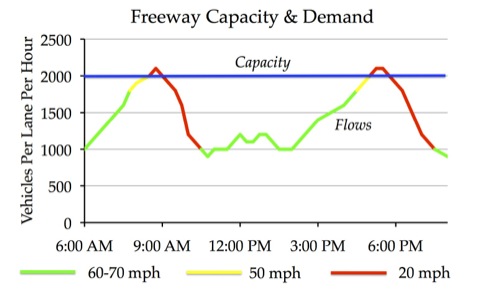The Obama administration is threatening to take back the $3.3 billion high-speed rail grant to California if the state legislature fails to approve the state’s high-speed rail plan by the end of June. Legislators had planned to hold some hearings this summer so they could base their decisions on actual facts rather than politics. Ironically, when California Republicans in Congress proposed to rescind the money, they were told there was no legal way to do it.
The High-Speed Rail Authority’s latest plan cuts Anaheim and Orange County out of the picture, alienating another group of voters and officials. Despite these cuts, the agency still expects to spend $68 billion building from San Francisco to Los Angeles. This is far more than it told voters it would cost when it asked them to approve the plan in 2008, and even if the legislature allows the authority to sell bonds to match the federal grant, the agency has less than 10 percent in hand.
A reporter at the Los Angeles Times did a little arithmetic and calculated that, to complete the first 130-mile segment in the Central Valley by 2017 as planned, the authority will have to spend $3.5 million per day. With the possible exception of war time, this is probably more than any one entity has ever spent on one project before. The implication is that the authority, which hasn’t been able to adequately manage anything yet, doesn’t have the capability of effectively spending that much money.








